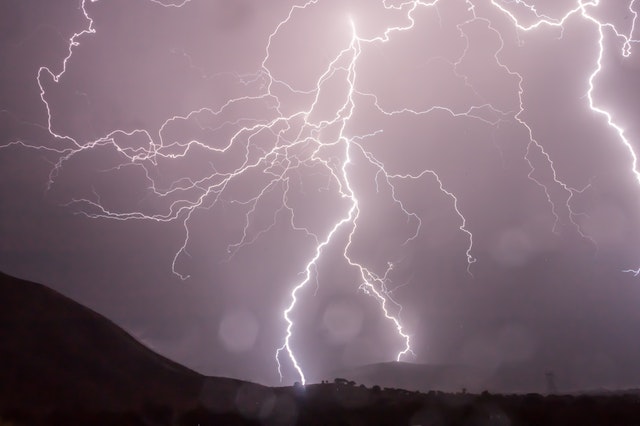Here in Michigan, we’re no stranger to storms. Our state has never been known for its mild weather conditions, and while everyone might think that winter storms are bad, we know that the most devastating weather often comes in the spring and summer, when thunderstorms roll in. High winds, down-pouring rains, and tornado watches aren’t totally uncommon, and they can leave some devastating storm damage in their wake. Luckily, most homeowners insurance policies cover damages from weather like this, so that you can get the repairs you need in the event of a damaging storm. But how exactly do you go about filing an insurance claim after a storm? Here’s a few steps to take to make sure you get the compensation you need:
Make sure everyone is okay
After a storm, your first priority should be your family and anyone at or near your home. Make sure that no one’s in immediate danger before you do anything else. For example, if someone was injured during the storm, it’s paramount that they first get the medical attention they need. If a tree fell on the roof of your home, it’s a good idea to stay with a friend or family while you’re waiting for repairs. Once everyone is out of harm’s way and has the medical care they need, it’s time to start your insurance claim process.
Take photos
Before you clean up or start moving things around, take pictures of any damage that occurred because of the storm. If a tree sideswiped your porch, it’s a good idea to grab as many photos from that incident as possible, and pair them with any “before” pictures you might have had. This will help give your insurance agent a better idea of exactly how much damage was done by the storm.
If your home sustained major damage to the roof, leave the up-close photos to the professionals. Whether your insurance company sends out a representative or a trained roofing professional, it’s a good idea to have them take the photos, as they’re trained and familiar with taking photos in those more precarious locations. The last thing you want is to injure yourself while trying to file a claim for your home.
Call your agent
Once you’ve assessed the damage, and have as many pictures as you can safely obtain, it’s time to call your insurance agent. Let them know what’s happened, and what sort of damage is currently affecting your home. Give them your honest opinion of the severity of the damage, so they can send a representative out in a time frame that makes sense for the amount of damage. Your agent will likely give you a few suggestions on how to proceed, and in most cases, you’ll have to wait for a representative to come out and fully inspect the damages themselves.
Clean up as best you can
While you’re waiting for that representative, work to clean up the damage as best you can. You’re free to clear away minor branches and sticks that haven’t damaged your home, and it’s important to do everything you can to ensure your home doesn’t sustain more damage. While you shouldn’t attempt to remove a tree that’s smashed into your home by yourself, it is a good idea to throw a tarp over any holes in your roof, and make some temporary patch ups to problem areas.
This is called mitigating the extent of the damage to your home, and by doing it, you have a better chance of preventing more damage. If, after a storm, you just leave your home exposed to the elements, and more damage occurs before the inspector gets there, you won’t be reimbursed for the additional damage if you could have reasonably protected against it. So if you sustained a great deal of water damage, feel free to turn on as many fans as possible, and take out any waterlogged mattresses, curtains, or rugs. Do everything you can to get your home back to normal, and save the receipts of any appliances or materials you had to purchase in the meantime. Whether you bought another tarp or some plywood to cover broken windows, these are costs that some insurance policies will cover in your attempt to mitigate further damage.
Get an estimate from a local contractor
If you’re still waiting for an inspector to come out from the insurance agency, it might be a good idea to call a local contractor. Many of them offer free damage repair estimates, which gives you a good reference point to judge just how much you need to claim. Though this isn’t a necessary step, it can help you get a better idea of what the full extent of the damage is, and help you understand what your insurance will and won’t cover. It’s also a useful guide for when you start talking with your insurance adjuster.
Wait to hear from your insurance company
Finally, after you’ve done as much clean up as you can, and the insurance inspector has made it out your home, it’s just a matter of waiting. In most cases, your insurance agency will get back to you on your claim as soon as possible, especially in instances of storm damage. When you do hear back from them, make sure you understand what it is they’re covering, and what they’re not covering. If you expected a larger sum from your insurance agency, make sure you ask why some things aren’t being covered. Insurance isn’t always easy to understand, but a quality agent will take the time to explain your policy, your claim, and your compensation.
If you have more questions about filing an insurance claim after a storm, or if you’ve experienced storm damage yourself, and aren’t sure what to do next, give one of the knowledgeable advisors at Doyle & Ogden a call. Call our office at 616-949-9000, or contact us online for a quote today!

